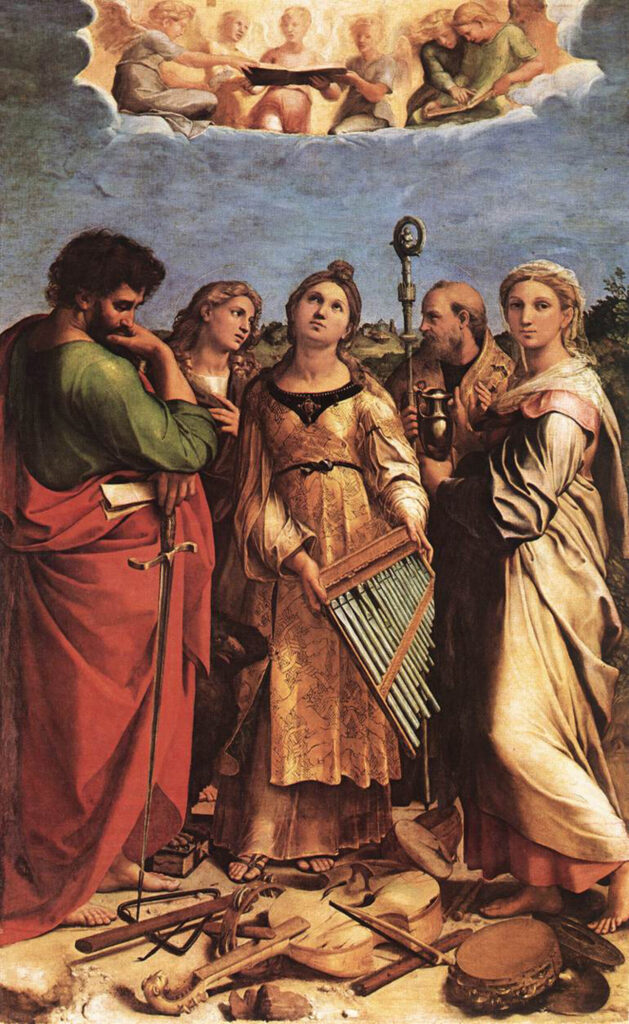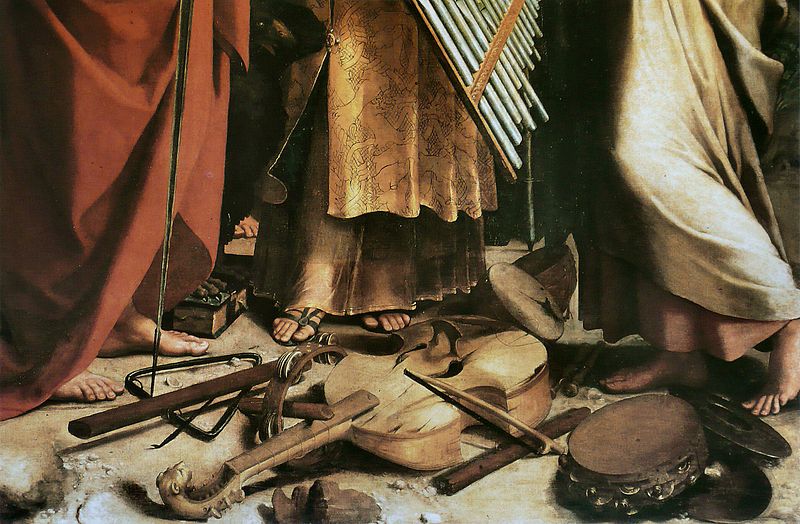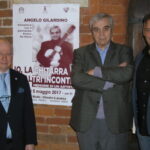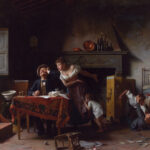
Italian Renaissance painting embodies the essence of an artistic revolution that forever changed the course of art. One of the foremost exponents of this movement, Raphael Sanzio, left an indelible mark on the fabric of art history, and his “Painting of Silence” stands as a powerful testament to his skill and vision.
Dated around 1514 and housed in the National Art Gallery of Bologna, this work emerges as an icon of tranquility and mystical contemplation. The scene revolves around the figure of Saint Cecilia, the patron saint of music, who is surrounded by an ensemble of saints and angels. With her gaze lifted to the heavens, Cecilia appears as the sole bridge between the earthly and the divine, listening to melodies inaudible to others.
The figures around her — Saint Paul with his sword, Saint John the Evangelist beside the eagle, Saint Augustine, and Mary Magdalene, each immersed in their own symbolism — create a semi-circle that, beyond their individualities, echoes the angelic choir above them in the painting.
Raphael’s originality shines through his choice to omit traditional images of divinity, such as crosses or doves. Art historian Anna Maria Brizio highlights this subtlety, stating that the divine presence is intrinsic in the soul of Saint Cecilia, and music, akin to art, is an internal and personal experience rather than an external phenomenon.
This visual narrative extends further with the musical instruments, scattered and broken at the saints’ feet, symbols of the transience of worldly existence compared to the eternity of the sacred. The cracked, stringless viola da gamba, along with other instruments associated with pagan worship, are painted with such realism that they could be considered as an independent “Still Life” of exceptional craftsmanship.

Equally important is the backdrop of the work: a landscape that gently fades behind the main figures, reminiscent of Leonardo’s settings, yet enriched with such attention to geological and naturalistic details that convey an almost scientific sensation.
At the center of this painting is a group of six angels, each with a deep symbolic meaning, linked as much to theology as to Kabbalah and astrology. These angels read a score, and though their song is beyond our hearing, Raphael manages to strike an internal chord in the observer, making us partakers in the celestial ascent, if not with the ear, then with the heart.
Raphael’s “Painting of Silence” is not just an artistic representation; it’s a visual symphony that speaks of humanity, spirituality, and the connection between the sensible and the supersensible. Raphael invites us to consider not just what we see, but also what we feel deeply, showing us that art is not only for the eyes but also, and perhaps most importantly, for the soul.











